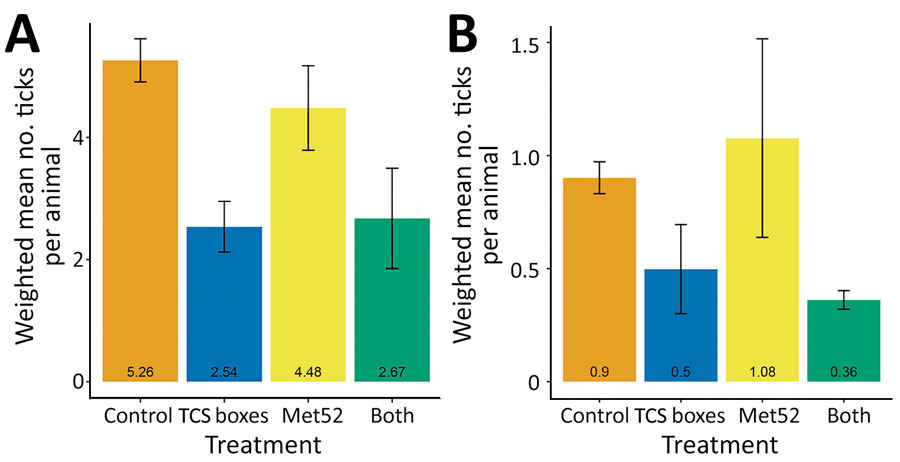Volume 28, Number 5—May 2022
Research
Effects of Tick-Control Interventions on Tick Abundance, Human Encounters with Ticks, and Incidence of Tickborne Diseases in Residential Neighborhoods, New York, USA
Figure 3

Figure 3. Weighted mean number of ticks on white-footed mice (A) and chipmunks (B) as a function of tick-control treatment, New York, USA, 2017–2019. Means represent the average of the 6 neighborhoods in each treatment group, whereas error bars represent SEs. Note that the scale of the y-axes differs. TCS, Tick Control System.
1These authors contributed equally to this article and were co-principal investigators.
Page created: March 07, 2022
Page updated: April 19, 2022
Page reviewed: April 19, 2022
The conclusions, findings, and opinions expressed by authors contributing to this journal do not necessarily reflect the official position of the U.S. Department of Health and Human Services, the Public Health Service, the Centers for Disease Control and Prevention, or the authors' affiliated institutions. Use of trade names is for identification only and does not imply endorsement by any of the groups named above.